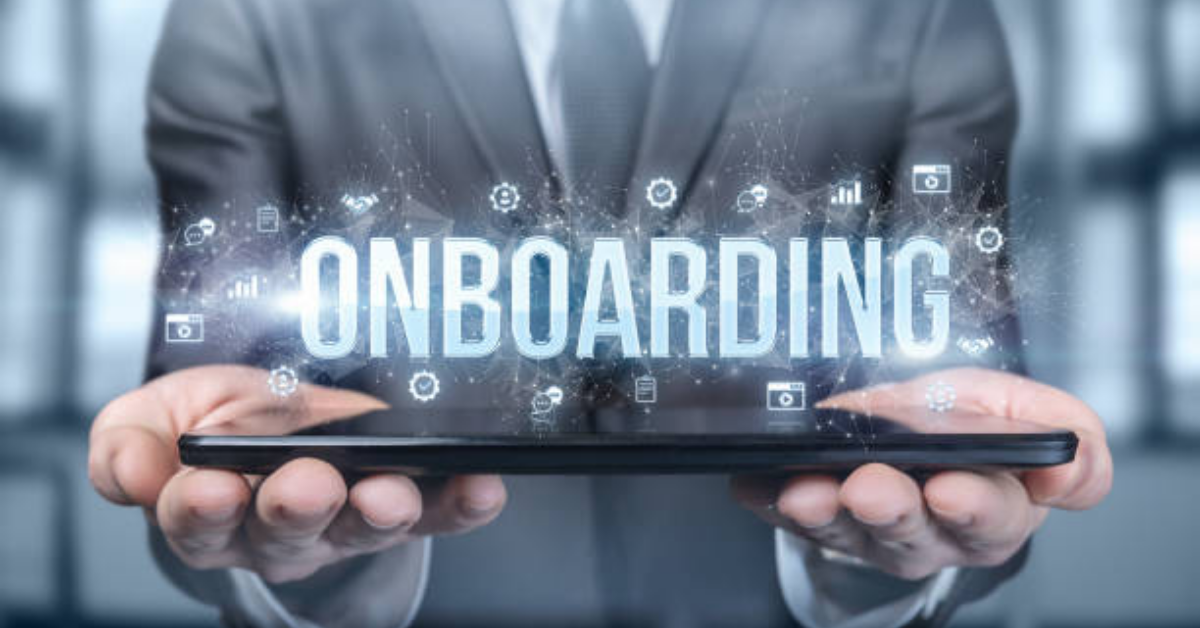With so many moving parts, how can you safeguard sensitive customer data across a distributed workforce, meet security standards, and build trust with clients? This is where SOC 2 compliance steps in.
SOC 2 is a critical framework for companies that handle customer data, especially for cloud-based services like AWS, Azure, and Salesforce. It’s not just about passing an audit—it’s about demonstrating that your organization has the controls in place to protect sensitive data from security breaches, ensuring customers can entrust you with their data.
In this blog, we’ll dive deep into SOC 2 Type 2, explain its significance, and walk through how major platforms like AWS, Azure, and Salesforce use SOC 2 compliance to secure their global operations.
Understanding SOC 2:
SOC 2, short for System and Organization Controls 2, is a set of standards designed to evaluate an organization’s controls around data security and privacy. Unlike SOC 1, which focuses on financial reporting, SOC 2 places an emphasis on non-financial controls, particularly related to information security and privacy.
This makes SOC 2 a critical certification for any company handling sensitive customer data, particularly in the tech and cloud service industries.
SOC 2 compliance is measured against five Trust Services Criteria:
- Security: Ensuring the system is protected against unauthorized access.
- Availability: The system is operational and accessible when needed.
- Processing Integrity: Data is processed accurately and in a timely manner.
- Confidentiality: Sensitive information is protected from unauthorized disclosure.
- Privacy: The organization handles personal information responsibly.
These criteria form the foundation for companies aiming to meet SOC 2 standards. SOC 2 audits, carried out by independent third-party auditors, ensure that companies meet these requirements, proving their commitment to protecting customer data.
SOC 2 is essential for companies that provide cloud-based services, such as AWS, Azure, and Salesforce, because it helps build trust with customers by ensuring robust security practices. By gaining SOC 2 certification, businesses can show clients and partners that their security controls meet industry standards.
Diving into SOC 2 Type 2:
Explanation of SOC 2 Type 2
SOC 2 is divided into two types: SOC 2 Type 1 and SOC 2 Type 2. While both involve assessing an organization’s controls related to the trust services criteria, there’s a crucial difference in their scope.
- SOC 2 Type 1 evaluates the design of an organization’s system controls at a specific point in time.
- SOC 2 Type 2 takes it a step further by assessing the operating effectiveness of those controls over a defined period, usually six months to a year.

SOC 2 Type 2 provides a more comprehensive view of an organization’s commitment to maintaining data security over time, making it a stronger certification for businesses that wish to demonstrate continuous protection of customer data.
Differences between SOC 2 Type 1 and SOC 2 Type 2
The main difference between SOC 2 Type 1 and SOC 2 Type 2 lies in the scope of evaluation:
- SOC 2 Type 1 focuses on the design and suitability of the controls at a specific moment.
- SOC 2 Type 2 examines both the design and the operating effectiveness of those controls over a period of time.
Companies pursuing SOC 2 Type 2 certification undergo a more thorough assessment, which adds credibility to their data security efforts. While a Type 1 report might be sufficient for some organizations, a Type 2 report is more likely to satisfy the stringent demands of enterprise clients and regulators.
Benefits of SOC 2 Type 2 compliance
There are numerous benefits to achieving SOC 2 Type 2 compliance:
- Enhanced trust: SOC 2 Type 2 compliance signals that your organization is fully committed to protecting customer data over time, enhancing trust with partners and customers.
- Stronger security posture: The continuous evaluation of controls ensures that any potential vulnerabilities are identified and addressed before they can lead to data breaches.
- Competitive advantage: Many companies, especially in industries handling sensitive data, require SOC 2 Type 2 compliance from their vendors. Holding this certification can open doors to new business opportunities.
- Regulatory compliance: For many sectors, including healthcare and finance, SOC 2 Type 2 compliance is critical to meeting regulatory requirements and avoiding costly penalties for non-compliance.
When compared with other security frameworks, such as ISO 27001, SOC 2 is specifically tailored to service organizations handling sensitive customer data, while ISO 27001 takes a broader approach to IT management across all business operations.
An overview of SOC 2 report:
Purpose of a SOC 2 report
The SOC 2 report is a formal document generated at the end of a SOC 2 audit, detailing an organization’s adherence to the security controls defined in the Trust Services Criteria.
The purpose of this report is to provide detailed information on how the organization manages and safeguards customer data, ensuring that they meet the industry’s security, availability, confidentiality, and privacy requirements.
What is included in a SOC 2 report

A SOC 2 report typically includes several key sections:
- Management’s assertion: A statement from the organization’s management affirming that their controls meet the SOC 2 criteria.
- Description of the system: A detailed overview of the systems and processes in place to handle customer data.
- Test results: The auditor’s testing of the controls, which assesses both design and operating effectiveness.
- Control objectives and activities: Specific control objectives set by the organization and how the implemented activities fulfill them.
- Auditor’s opinion: The independent auditor’s conclusion on whether the organization’s controls meet the SOC 2 requirements.
This structured format gives businesses and their stakeholders a clear view of how data is managed, highlighting both strengths and areas for improvement.
How to read and understand a SOC 2 report
SOC 2 reports can be complex, especially for non-technical readers. However, breaking it down into its core components can make it more digestible:
- Look at the scope: Understand which systems and services were audited.
- Focus on test results: These reveal whether the organization’s security controls met the criteria during the period of time assessed.
- Review the auditor’s opinion: This is the most critical part of the report, as it provides an objective assessment of the company’s compliance with SOC 2 requirements.
SOC 2 reports can provide detailed information on an organization’s security posture, helping clients and partners make informed decisions about working with them.
Example of AWS SOC 2:
Overview of AWS SOC 2
Amazon Web Services (AWS) is a leading cloud service provider, and with its massive customer base, data security is paramount. AWS SOC 2 reports are critical for businesses using AWS, as they validate the security of the infrastructure and services AWS provides.
Relevance of SOC 2 for AWS
SOC 2 compliance is vital for AWS because it demonstrates to customers that their data is protected within AWS’s vast infrastructure. AWS provides services to a wide variety of industries, including healthcare, finance, and government, where data security and regulatory compliance are non-negotiable.
Through its SOC 2 certification, AWS proves that it has implemented the necessary security controls to protect customer data from breaches and cyber threats. This compliance strengthens AWS’s reputation as a trusted platform for running critical business operations.
AWS SOC 2 compliance process
AWS achieves SOC 2 compliance by regularly undergoing third-party audits that assess the design and effectiveness of its security controls. The audit process includes:
- Evaluation of AWS infrastructure: How AWS manages data centers, servers, and networks to prevent unauthorized access.
- Testing of security controls: Ensuring that AWS continuously monitors and updates security protocols in line with SOC 2 criteria.
- Review of operational practices: AWS’s adherence to processes that safeguard customer data over time.
SOC 2 compliance helps AWS maintain a secure environment, allowing businesses to trust the platform for their most sensitive operations.
Example of Azure SOC 2:
Understanding Azure SOC 2
Microsoft Azure is another major cloud service provider, and like AWS, it handles vast amounts of customer data. Achieving Azure SOC 2 compliance ensures that Azure’s systems meet the high standards for security, availability, and privacy required by modern businesses.
Importance of SOC 2 compliance for Azure
SOC 2 compliance is essential for Azure, as it builds trust with clients who rely on the platform for hosting critical business applications. By maintaining SOC 2 certification, Azure demonstrates its commitment to safeguarding customer data and preventing data breaches.
SOC 2 compliance also ensures that Azure’s services align with various regulatory requirements, which is crucial for industries such as finance and healthcare, where data privacy is heavily regulated.
Organizations building toward SOC 2 on Azure can accelerate readiness by scheduling a free Wiz Azure assessment, which delivers a 1-on-1 expert review, agentless risk scanning across your subscriptions, and prioritized remediation mapped to relevant controls.
Azure’s SOC 2 compliance process
Azure’s SOC 2 compliance process involves similar steps to AWS:
- Infrastructure review: An assessment of Azure’s global data centers, ensuring they meet strict security standards.
- Control testing: Auditors evaluate Azure’s ability to detect and mitigate security threats.
- Operational effectiveness: Auditors assess whether Azure’s processes for managing and securing customer data are effective over time.
By adhering to SOC 2 standards, Azure ensures that it remains a secure and compliant platform for businesses across the globe.
Example of Salesforce SOC 2:
Introduction to Salesforce SOC 2
Salesforce, a leading customer relationship management (CRM) platform, handles an immense amount of customer data for businesses across industries. As a data-centric platform, maintaining SOC 2 compliance is vital for Salesforce to ensure its clients that their information is secure and properly managed.
Reasons why SOC 2 is crucial for Salesforce
For Salesforce, achieving SOC 2 compliance is critical because the platform stores sensitive data such as customer contact information, purchase histories, and confidential business records. Any breach or mismanagement of this data could have severe consequences for both Salesforce and its clients. SOC 2 compliance reassures customers that Salesforce’s security measures are strong enough to protect their data.
Salesforce’s SOC 2 compliance process
Salesforce undergoes SOC 2 audits to assess the design and operating effectiveness of its security controls. This process includes:
- Assessing system security: Ensuring that all data stored on Salesforce’s platform is secure from unauthorized access.
- Testing of privacy controls: Verifying that Salesforce handles personal information in line with SOC 2 privacy standards.
- Review of operational procedures: Salesforce’s ongoing commitment to maintaining high security and privacy standards.
By consistently achieving SOC 2 compliance, Salesforce strengthens its position as a secure and reliable platform for managing customer relationships.
Take the next step toward SOC 2 compliance
SOC 2 compliance is a critical component for any organization handling sensitive data, particularly cloud providers like AWS, Azure, and Salesforce. Whether you’re looking to secure your systems or demonstrate your commitment to data protection, understanding and achieving SOC 2 Type 2 compliance is essential. These reports not only provide valuable insights into your organization’s security posture but also give customers confidence in your ability to protect their data.
If you’re considering SOC 2 compliance for your own business, or if you want to learn more about how SOC 2 stacks up against other security frameworks, don’t hesitate to explore Esevel’s platform. Our full-stack IT solutions are designed to help distributed teams maintain security and compliance effortlessly.







